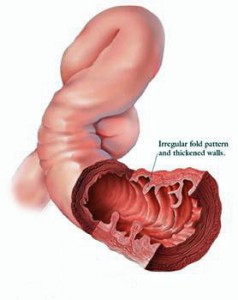 You might not have heard the name of Whipple’s disease because it is rare. A bacterium TropHeryma Whipplie causes the disease. The disease was first noticed by the noble prize winner pathologist George Hoyt Whipple in 1907 and was named after him. The common symptoms of whipple’s disease are weight loss, joint pains and diarrhea and anemia. The main cause of the disease is infection by the TropHeryma Whipplie bacterium that damages the mucosal lining of small intestine that stops the absorption of food through the intestines. The disease is reported to be more common in white men in North America. The whipple’s disease can affect the main organs like heart, kidneys and brain and become fatal.
You might not have heard the name of Whipple’s disease because it is rare. A bacterium TropHeryma Whipplie causes the disease. The disease was first noticed by the noble prize winner pathologist George Hoyt Whipple in 1907 and was named after him. The common symptoms of whipple’s disease are weight loss, joint pains and diarrhea and anemia. The main cause of the disease is infection by the TropHeryma Whipplie bacterium that damages the mucosal lining of small intestine that stops the absorption of food through the intestines. The disease is reported to be more common in white men in North America. The whipple’s disease can affect the main organs like heart, kidneys and brain and become fatal.
A patient with the symptoms of diarrhea, weight loss and joint pains should consult a doctor. The diagnosis of whipple’s disease is not easy as majority of doctors will be looking for other diseases being unaware of it. It is usually discovered at a terminal stage. The doctors take small tissues from small intestine by endoscopy and the biopsy results lead to diagnosis. The blood tests are also helpful since the patients usually have low count of red blood cells. The albumin concentration is also low in blood samples of patients having whipple’s disease.
The disease is curable by a long course of antibiotics. The patients are usually treated by intravenous injections for fourteen days followed by a course of antibiotics for 1-2 years. The patients in early stages show signs of recovery within weeks. The patient gets relieved from joint pains and Diarrhea and his body weight starts to stabilize.
Your story was really informative, tahnks!